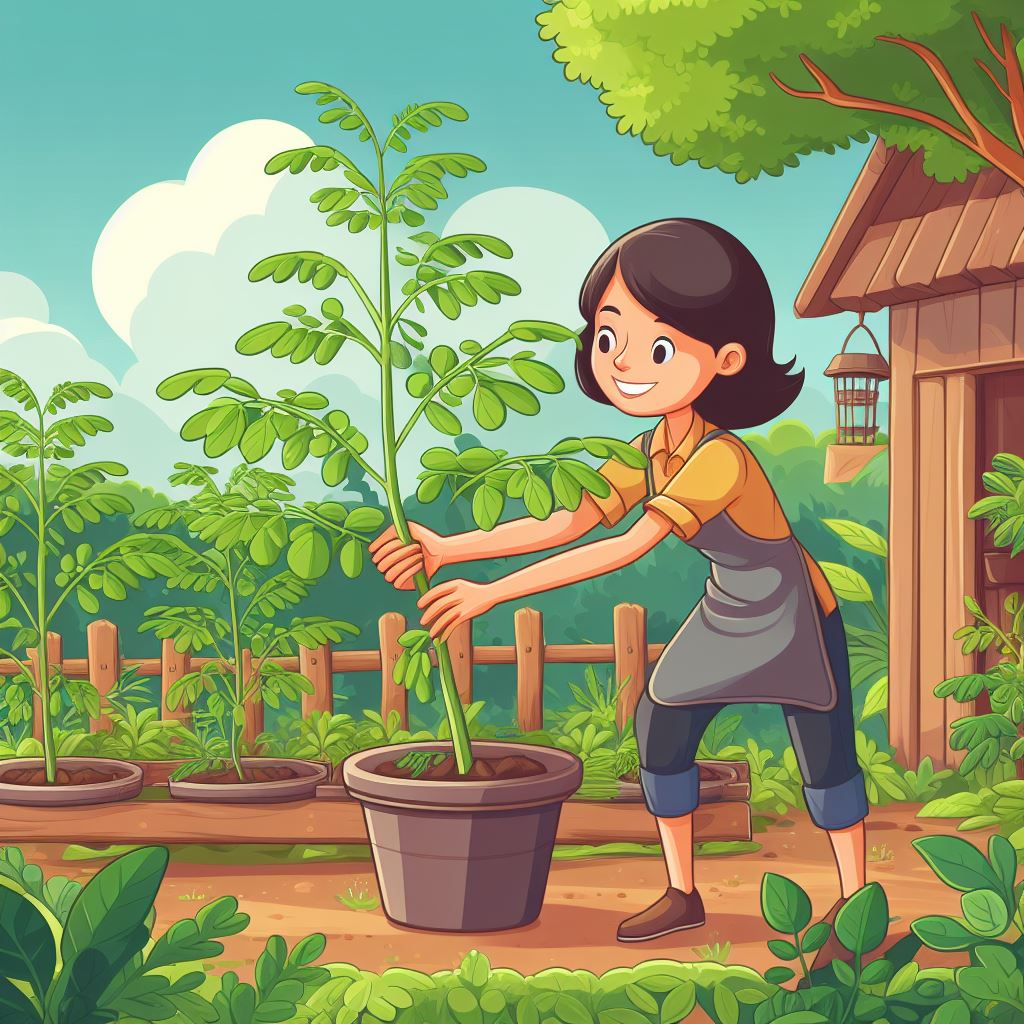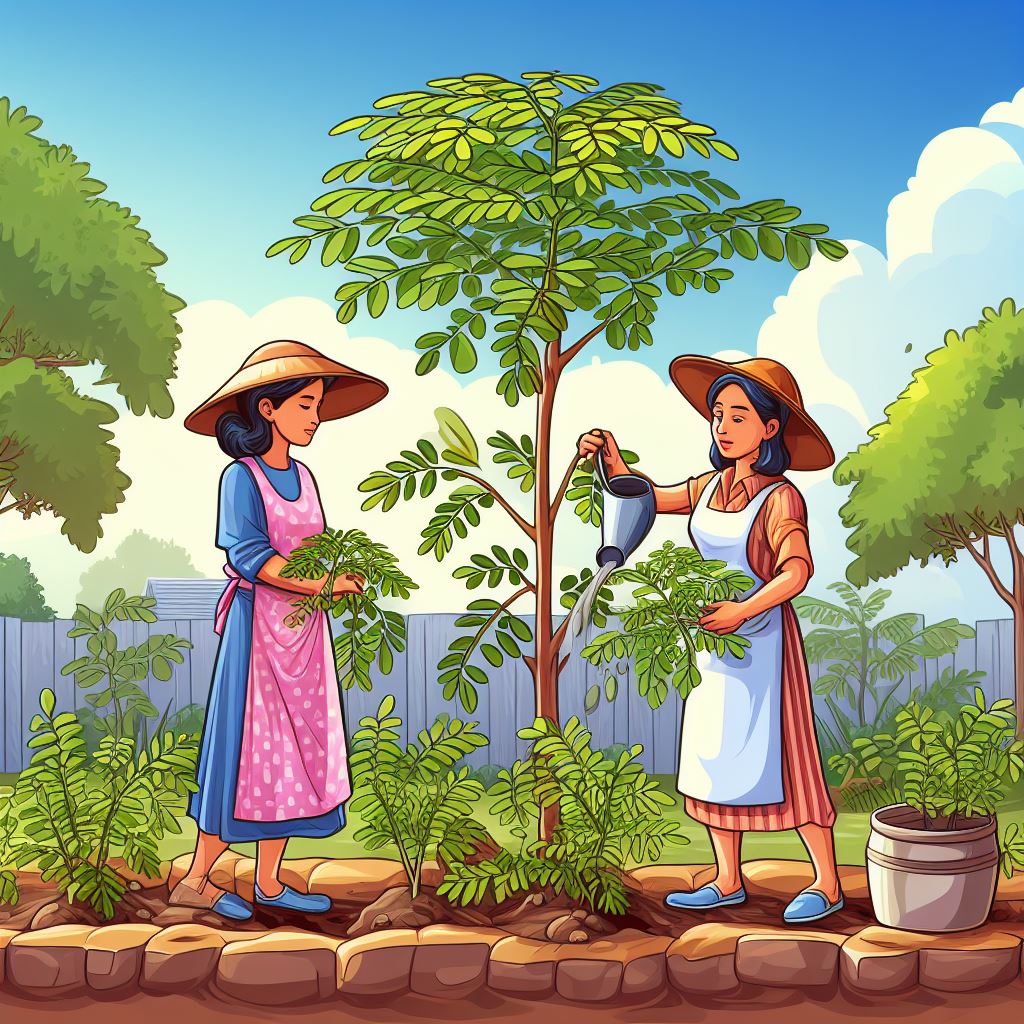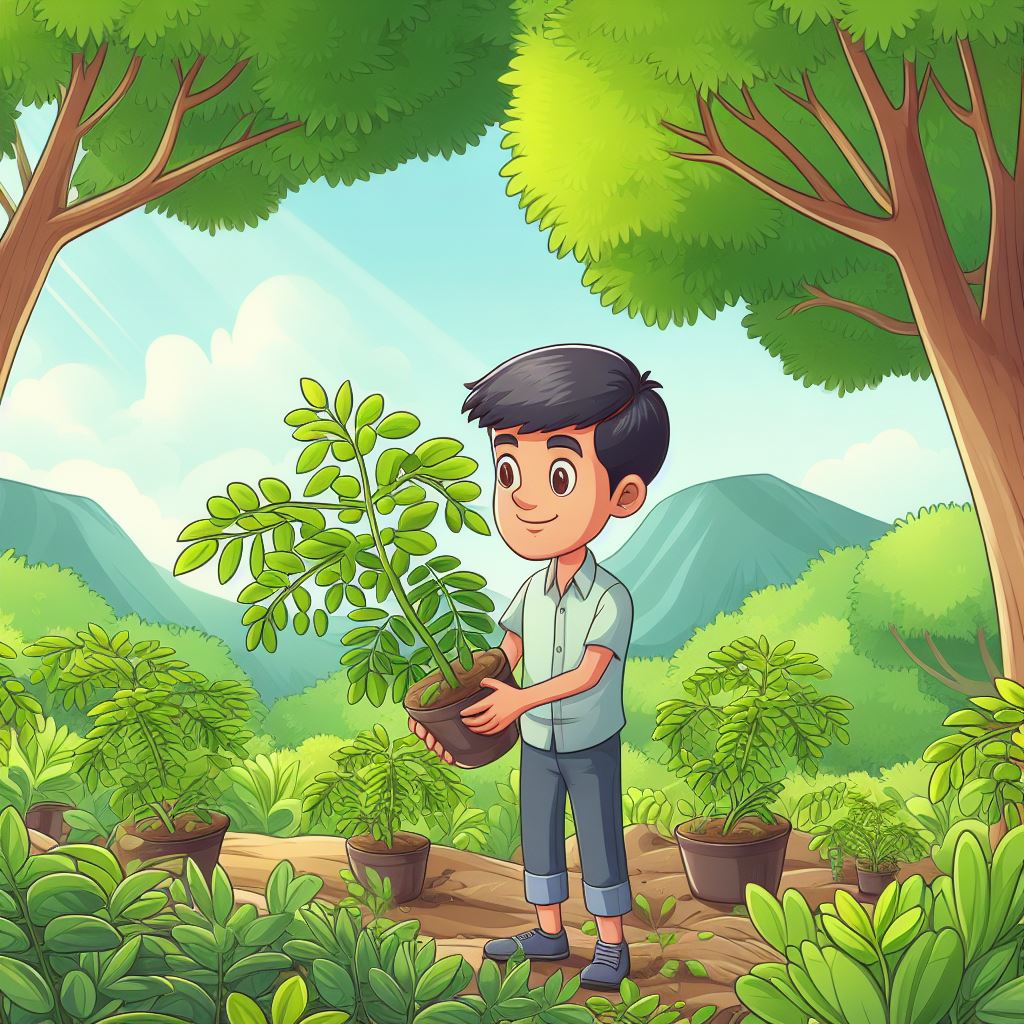The moringa tree, also known as the horseradish tree or drumstick tree, is a fast-growing, drought-tolerant tree that is native to India and Southeast Asia. It has been cultivated for centuries for its many medicinal and culinary uses.
Moringa is a nutritional powerhouse. Its leaves are a good source of protein, vitamins A, C, and E, calcium, potassium, and iron. They also contain antioxidants and other beneficial compounds.
Here are some of the health benefits of moringa:
- Boosts immunity: Moringa is rich in vitamin C and other antioxidants, which can help to boost the immune system and protect against infection.
- Reduces inflammation: Moringa contains anti-inflammatory compounds that can help to reduce inflammation throughout the body.
- Improves blood sugar control: Moringa may help to improve blood sugar control by increasing insulin sensitivity and reducing glucose absorption.
- Lowers cholesterol: Moringa may help to lower cholesterol levels by reducing LDL (bad) cholesterol and increasing HDL (good) cholesterol.
- Protects the liver: Moringa contains compounds that can help to protect the liver from damage.
- Improves brain function: Moringa may help to improve brain function and protect against neurodegenerative diseases such as Alzheimer’s and Parkinson’s diseases.
- Promotes weight loss: Moringa may help to promote weight loss by reducing appetite and increasing metabolism.
Moringa is also a versatile ingredient that can be used in a variety of dishes. The leaves can be eaten fresh, cooked, or dried. They can also be used to make tea, powder, and capsules.

Growing moringa at home
Moringa is a relatively easy tree to grow, even for beginners. It can be grown in both tropical and subtropical climates.
To grow moringa, simply plant the seeds in well-drained soil and water regularly. The tree will typically germinate within 7-10 days.
Once the tree is established, it is relatively low-maintenance. It does not require a lot of fertilizer or water.
Moringa leaves can be harvested year-round, but they are most nutritious when they are young. To harvest the leaves, simply cut them from the tree with a sharp knife.
How to use moringa

Moringa leaves can be eaten fresh, cooked, or dried. They can also be used to make tea, powder, and capsules.
Here are some ideas for how to use moringa in your cooking:
- Add fresh moringa leaves to salads, smoothies, or soups.
- Cook moringa leaves with other vegetables such as spinach, kale, or collard greens.
- Dry moringa leaves and grind them into a powder. The powder can be added to smoothies, yogurt, or oatmeal.
- Make moringa tea by steeping fresh or dried leaves in hot water.
- Add moringa powder to capsules and take them as a supplement.
Moringa is a safe and healthy food for most people. However, it is important to talk to your doctor before taking moringa supplements, especially if you have any underlying health conditions or are taking any medications.

